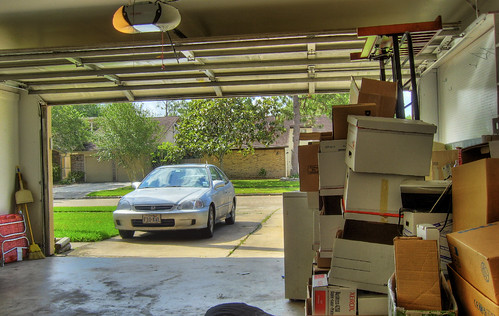Over the weekend I bought myself a new SD card for my Canon SD700 IS camera for the expressed purpose of having a little fun with it. For those of you who don't know me, when I use the word ‘fun’ in the context of something electronic, it means that I'm planning to hack it. I have always enjoyed hacking electronic things to make them more useful, like getting my iPhone to work with the t-Mobile network, and the camera is a perfect project.
I've had the Canon SD700 IS for a few years now and while I love it for it's near instant start-up (less than 1.5 seconds from power on to taking a photo) I have always wished that the camera allowed me more control over how it shoots photos. Capabilities like being able to shoot long exposure photos or bracketing for high dynamic range photos really interest me, but cameras that offer these features out of the box are too expensive for my tastes.
The worst thing about these lack of features is that the camera hardware is capable of so much more than the software that it ships with allows. The shutter speed limit imposed by the default software it ships with is 80% slower than what the camera is capable of. I'm sure that you've heard the myth that we only use 20% of our brain; in the case of the Canon PowerShot cameras they only offer us 20% of the capabilities.
What can we do to address these limitations? Enter the open-source Canon CHDK firmware.
The CHDK, or Canon Hacker’s Development Kit, is a new firmware upgrade for the Canon cameras that allow you to do loads more with your PowerShot camera. You can set it up as a motion sensitive capture device, set the exposure to last up to 65 seconds and shoot in RAW mode (which offers far more information from the CCDs in the file format). This is photographic feature gold. It takes a basic point-and-shoot Canon digital camera and turns it into the feature equivalent of a top of the line digital camera.
On Sunday I loaded the software onto the new SD card and played around a bit with it. The first trick was stripping out the 'quarantine' flag that downloaded files get in MacOS X, because it would not run with the flag in place. This was accomplished with a bit of UNIX command line fun, and once the card was re-inserted, the new software loaded up fine.
The first new feature that I explored was creating high dynamic range photos. HDR photos use the tonal details from different exposures and merge them to create a composite photo with a much wider dynamic range than a traditional camera can take. This allows you to bing out the details in shadows and bright areas without over or under-exposing the image. I think it will be best if I show you. Here are a series of three photos that I took with my Canon SD700 IS using the bracketing on timer mode feature in the CHDK. The first is a normal photo that is taken with the default settings of the camera. The second is -4 EV from the first and the third is +4 EV from the first. You can see even in these small thumbnails that all three photos have areas with a lot of detail and areas with almost no detail. Shots like this make for the most impressive HDR results.
Here are a series of three photos that I took with my Canon SD700 IS using the bracketing on timer mode feature in the CHDK. The first is a normal photo that is taken with the default settings of the camera. The second is -4 EV from the first and the third is +4 EV from the first. You can see even in these small thumbnails that all three photos have areas with a lot of detail and areas with almost no detail. Shots like this make for the most impressive HDR results.
After taking the photos I import them into an application called Photomatix Pro (for both Mac and PC) which processes the images into one file and then lets me adjust the tonal range to bring out the optimum detail. The results for my garage photo look like this:
You can see how much detail is brought out in the final photo. Instead of having the boxes in shadow or the outside blown out in brightness the HDR technique finds the detail in different exposures and maps them into one single image.
On Monday I showed some of these photos that I'd out together to Melissa and she immediately agreed to join me in an HDR photo shoot at Hester Park in Seabrook. You can see the results by clicking on the thumbnails below.
 |  |  |
 |  |  |
Some of the shots turned out better than others, but that's OK. I'm not looking to make art prints from my photos; instead I just seek satisfaction from trying new things. How boring the world would be if people never tried something new.
0 comments:
Post a Comment